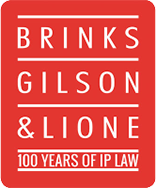In an opinion dated March 28, 2018 (GlaxoSmithKline v. Teva, No. 14-878-LPS-CJB (D. Del.)), Judge Stark of the District of Delaware granted Teva’s motion for judgment as a matter of law (“JMOL”) holding that GSK failed to present sufficient evidence that Teva induced infringement of GSK’s U.S. patent No. RE40,000, essentially vacating the jury’s award of $234 million to GSK.
This is a Hatch-Waxman litigation involving the drug carvedilol, developed and marketed by GSK under the brand name Coreg®. In May 1997, the FDA approved carvedilol for three indications: (1) hypertension, (2) mild to severe CHF, and (3) left ventricular dysfunction (LVD) following myocardial infarction (heart attack) in clinically stable patients; however, GSK only marketed Coreg® carvedilol tablets in the United States for CHF indication.
In June 1998, GSK’s U.S. Patent No. 5,760,069 (“the ‘069 patent”) issued, claiming a method of decreasing mortality caused by CHF by administering carvedilol in conjunction with one or more therapeutic agents selected from an ACE inhibitor, a diuretic, and dioxin. GSK subsequently filed a reissue application to correct certain errors in the ‘069 patent and, on January 8, 2008, the ‘069 patent reissued as U.S. Patent No. RE40,000 (“the ‘000 patent”).
Meanwhile, in March 2002, Teva filed with the FDA an Abbreviated New Drug Application (“ANDA”) for permission to market generic carvedilol tablets. Teva initially submitted a paragraph IV certification asserting that the ‘069 patent was invalid and filed a paragraph III certification over the composition of matter patent, U.S. Patent No. 4,503,067 (“the ‘067 patent” which was not at issue in this case). In August 2007, however, Teva sought FDA approval of its ANDA pursuant to 21 U.S.C. 355(j)(2)(A)(viii) – a “section viii carve out” – so that it could label its generic carvedilol tablets as indicated for uses not covered by the ‘000 patent, i.e., for treatment of hypertension and post-myocardial infraction LVD. Because the ‘000 patent only claimed a method of using carvedilol for treatment of mild to severe CHF, Teva believed its “skinny label” generic product would not infringe the ‘000 patent.
Following the FDA’s approval of Teva’s ANDA, Teva launched its generic carvedilol in September 2007.
In April 2011, the FDA sent Teva a letter in response to the de-listing of certain GSK patents from the Orange Book. The FDA instructed Teva to “revise [its] labeling to include the information associated with [the de-listed] patent.” One of the patents that had been de-listed was GSK’s ‘069 patent, which had reissued as the ‘000 patent. Teva amended its label to add the CHF indication, creating its “full label” substantially similar to GSK’s full label.
After a seven-day trial in this patent infringement action, the jury found that Teva willfully induced infringement of claims 1-3 of the ‘000 patent during a “skinny label” or “partial label” period (after the ‘069 patent reissued as the ‘000 patent until Teva amended its label to include the CHF indication) and that Teva willfully induced infringement of all asserted claims of the ‘000 patent during a “full label” period (after Teva amended its label until expiration of the ‘000 patent). The jury award GSK $234,110,000 in lost profits and $1,400,000 in reasonable royalty damages.
In granting Teva’s JMOL motion, Judge Stark concluded that substantial evidence does not support the jury’s findings on inducement in either the skinny or full label period. The court, therefore, granted this portion of Teva’s motion.
To prove inducement, GSK was required to prove by a preponderance of the evidence that “Teva’s alleged inducement, as opposed to other factors, actually caused the physicians to directly infringe.” GlaxoSmithKline LLC v. Teva Pharms. USA, Inc., 2018 U.S. Dist. LEXIS 51169, at *13 (D. Del. March 28, 2018). (Emphasis in the original). The jury was instructed that “Teva cannot be liable for induced infringement where GSK does not show that Teva successfully communicated with and induced a third-party direct infringer and that the communication was the cause of the direct infringement by the third-party infringer.” Id. at *14. (Emphasis in the original).
The court found that the substantial uncontroverted evidence presented at trial showed that factors other than Teva’s actions caused doctors to infringe GSK’s patent. For example, the court found that “prior to the launch of generic carvedilol (including by Teva), doctors deciding to write a prescription for carvedilol relied on various sources other than Teva’s label and marketing materials” stating that “[i]n addition to the knowledge and experience that ordinary skilled cardiologist had acquired by July 2007 about the benefits of treatment with carvedilol, such doctors had access to American Heart Association and American College of Cardiology guidelines, carvedilol research studies published in the New England Journal of Medicine, The Lancet, and the British Heart Journal, GSK’s own Coreg® label and product insert, and GSK’s extensive promotional activity – totaling nearly $1 billion (See Vojir Tr. At 508-09) – which included sending doctors to hospitals, giving seminars, and detailing, marketing, and advertising Coreg ®.” Id. at *22. In fact, GSK’s expert, Dr. McCullough, testified that he had not read Teva’s generic label prior to writing prescriptions for carvedilol. Moreover, GSK concedes that prior to the generics’ entrance into the market in 2007, physicians already knew how to use carvedilol for treating CHF. Further, Dr. McCullough, as well Teva’s experts, agreed that even in September 2007 when generic companies began selling carvedilol, doctors relied on guidelines and research, as well as their own experience, in addition to GSK marketing materials. Id. at *24.
In a footnote, Judge Stark distinguished the instant case from typical ANDA cases in that this case involves an at-risk launch. Cases such as Sanofi v. Watson Laboratories Inc., 875 F.3d 636, 646 (Fed. Cir. 2017) involve the ordinary Hatch-Waxman framework, “where a claim of induced infringement is filed before the generic has launched its product, and necessarily, before the generic has even attempted to communicate with any direct infringer.” (D.I. 411 at 3). In those cases, “the focus must be on intent, rather than actual inducement.” Id. In this case, GSK filed its case almost seven years after generic product launch. Therefore, GSK’s inducement claims “are not based on a hypothetical, but instead must be supported by sufficient evidence as to what actually happened during the relevant time period.” (Id. at 3-4). Reliance on a label and speculation about what may occur in the future cannot substitute for actual evidence about what actually occurred in the past.
This case will likely be appealed.






 />i
/>i
